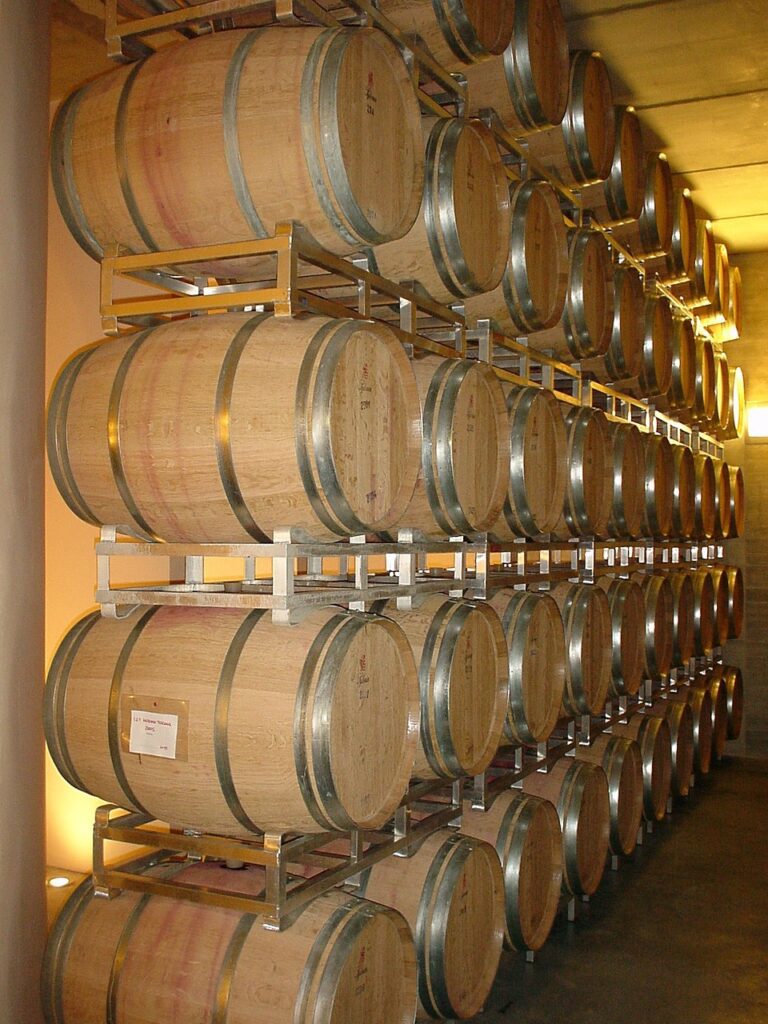Sulphur dioxide is for sure the most general additive during winemaking. As result of its anti-microbial and anti-oxidative properties it is unique and no substitute could yet be found to replace it.
Increasingly more consumers push the wine industry to limit the additives during winemaking. As a result of its potential health risks, sulphur dioxide is one of them. The addition of sulphur dioxide at the crush of grapes and just before bottling is the most general stage of addition. Even if no sulphur dioxide is added during winemaking some yeasts form small quantities of it during fermentation and there is consequently not a sulphur free wine. Grape juice contains different yeast species of which Saccharomyces cerevisiae is usually dominant during alcoholic fermentation. It is however a cellar resident, which is rarely found on healthy grapes in the vineyard. It is also less sensitive to sulphur dioxide than the non-Saccharomyces species, which occur in the vineyard.
A variation of Saccharomyces cerevisiae species is commercially available, which occur in cellars and dominate fermentations. Winemakers may however prefer to execute spontaneous fermentation, with yeast occurring in the vineyards expressing the terroir of the vineyard. They can also decide to decrease or limit the use of sulphur dioxide, but little research has been executed to determine the influence of the decrease at crush on the wine yeast, bacteria and sensory attributes. During 2014 Canadian research was executed with Pinot gris to ascertain it. Three different levels of sulphur dioxide, namely 0, 20 and 40 mg/L respectively were compared. The traditional winemaking analyses of temperature, residual sugar, pH, volatile acidity and total acid were done after fermentation and microbial analyses were applied to identify yeasts and bacteria. After completion of the alcoholic fermentation the wines were racked and bottled for the blind sensory evaluation by a panel of 10 trained members.
The chemical composition of the different levels of sulphur dioxide additions was very similar. The bacteria community was also not influenced by the different levels and did also not vary during the different fermentation stages. Enterococcus bacteria represented about 70% of the bacteria population, followed by 15% of a Bacillaceae bacteria. Both are lactic acid bacteria, which are commonly identified in wine fermentations. The traditional Oenococcus, Lactobacillus and Leuconostoc species did however occur in very low populations. It can possibly be attributed to the low pH (3,35 – 3,27) and the sulphur dioxide additions where applicable. Bacteria are sensitive to both factors. The fungal community was however significantly influenced by the sulphur dioxide additions. After completion of the cold settling of juice the communities were very similar and Aureobasidium pullulans and Cladosporium dominated with a small amount of Hanseniaspora. Aspergillus flavus and Penicillium species, which are both potential micotoxyn producers occurred in all cases in very low populations. During alcoholic fermentation the population within each sulphur dioxide level was relatively stable with Saccharomyces cerevisiae, which dominated from the beginning until the end. Considerable differences however occurred between the different levels. Hanseniaspora species maintained a 20% share in the population during fermentation of the 0 mg/L sulphur dioxide level. This diminished at the increased sulphur dioxide levels, which can be attributed to sulphite sensitivity, because the final alcohol concentration at all three levels were similar. Non-Saccharomyces yeasts, which originate from the vineyard, including Hanseniaspora and Aureobasidium pullulans can promote grape cultivar aromas by producing enzymes, which react with precursor compounds. Hanseniaspora can for example form compounds like acetoin (buttery) and ethyl acetate (fruity at low concentrations). Saccharomyces uvarum, which can contribute to wine quality by the formation of glycerol, also occurred in low populations. Various new commercial forms of it were developed over recent years. This species produces low alcohol concentrations. As a result of climate changes, which result in grapes with higher sugar concentrations, it can possibly be utilised to limit consequential higher alcohol concentrations. Saccharomyces cerevisiae was the dominant species during the fermentation of all the treatments.
Traditionally it was accepted that yeast which occur in the vineyard dominates spontaneous fermentations, without the addition of sulphur. Saccharomyces cerevisiae yeasts did however dominate it, because it has the highest cellar population, which was built up over years. Each of the three different treatments had four dominant strains during the total alcoholic fermentation. One of them occurred in all three treatments. It was the strain, which was used in the cellar for inoculated fermentations. The domination of Saccharomyces cerevisiae strains already occurred in the beginning of the alcoholic fermentation. Seeing that different strains of it can form flavour active compounds like iso-butanol, acetaldehyde, n-propanol and iso-amylalcohol the relative high populations of it during fermentation is significant.
Eighteen sensory characteristics were evaluated by the panel. Two of it, namely the citrus and pome fruit character differed significantly. Both are associated with cool climate wines like Pinot gris. Wines of the 0 mg/L treatment displayed the most citrus character, while the pome fruit character occurred the most at the 0 and 20 mg/L treatments. The 40 mg/L treatment displayed the least of both characters. Significant other flavour differences were possibly limited, because new barrels were used for the research. The difference in the fruity character of the different treatments can possibly be attributed to the formation of different flavours by yeasts at low sulphur dioxide additions or the neutralisation of it by sulphur dioxide at higher levels (Morgan & Durall, 2020).

Sulphur dioxide adjustments can be done in liquid form by means of a SO2 cylinder.
Reference
Morgan, S.C. & Durall, D.M., 2020. How sulphur dioxide addition at crush can impact wine yeasts, bacteria and sensory attributes. Wine Business Monthly, August 2020: 50 – 55.













